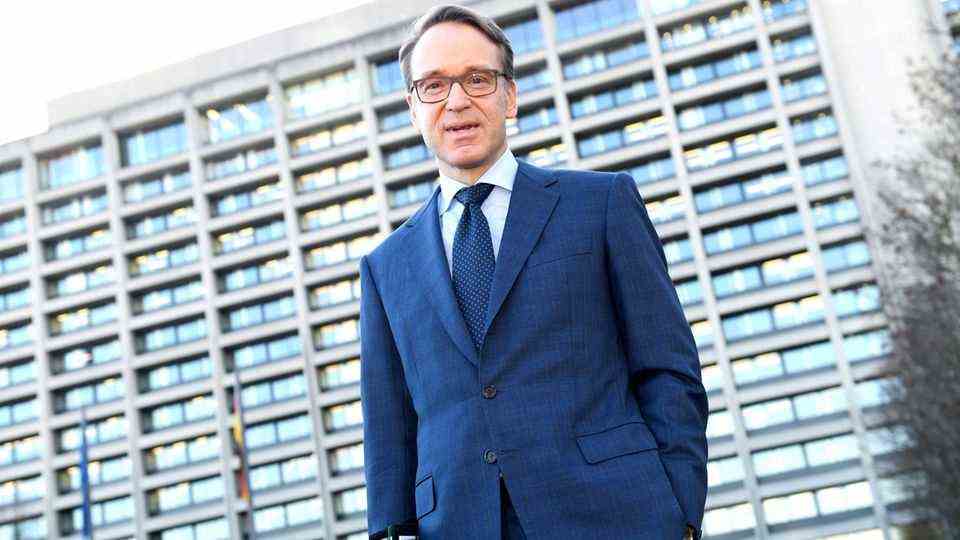Would you like to put money into stocks or funds – but you lack the know-how? If you want to make provisions for old age, you don’t need to be a professional. Of the star explains how even beginners can make money with stocks.
The news came as a surprise: Germany’s top banker Jens Weidmann, of all people, is stacking unused funds or insider tips for securities in his custody account. Instead, he has invested his private fortune in a ridiculously simple way: He has two ETFs that invest worldwide and in DAX companies.
As simple as his strategy is, it works. Because if you want to save money for later in the long term, you don’t need high-risk stocks or sophisticated strategies. Rather, it is about continuity and a long investment horizon. In short: doing it yourself and starting to save is sufficient.
Jens Weidmann shifts his money into ETFs, these are equity funds that have no active management, but only track a benchmark index. But what does that mean? One of Weidmann’s ETFs replicates the DAX. This means that the banker benefits almost exactly from the development of the DAX, because these stocks are dormant in his ETF. If the DAX rises by five percent, this also applies to the banker’s investments. It’s simple – maybe too easy? If the DAX slips into the red, this also applies to the investment. Because that is created fully automatically. With actively managed funds, professionals can intervene and take countermeasures. But that has its price.
That is what funds and ETFs cost
Buying funds or ETFs costs fees. The initial charge, management and performance fees must be paid by the investor. However, there are big differences here – and they have a direct effect on the return. Because every euro that investors pay for fees and the like causes the yield to shrink. You should take a closer look. The issue surcharge is a one-off fee for fund purchases that represents the difference between the higher issue price and the lower redemption price and is usually stated as a percentage. This can cost up to 6 percent. Therefore, investors should check carefully how high the front-end load is, because some online brokers can save this fee.
The management fees are higher for actively managed funds – of course, bankers have to be paid here who layer stocks in the fund. The costs amount to between 0.8 and 3 percent. An ETF is cheaper: the management fee starts at 0.05 percent, and usually not even one percent is due. In addition, you save the performance fee with ETF. This is due for active funds when the fund manager’s performance was really good. The investor is also happy about that, but if the fund was only marginally better than the target – especially when the markets are in a downtrend – then investors have to pay a reward of between 5 and 25 percent, even though they hardly deserve it themselves.
But which fund or ETF is best to buy? The bad news: there are a lot of funds. The BaFin supervisory authority lists almost 14,000 of them. However, these can be bundled into groups: some invest worldwide, others at country or industry level. So before you buy a fund, basic questions need to be clarified:
1. Active funds or cheaper ETF?
2. Single deposit or savings plan?
3. How willing am I to take risks?
Whether an active fund or an ETF is a question of faith when investing: Some prefer a more expensive, active fund that can take countermeasures in times of crisis. The others say that hardly any fund has beaten the benchmark index in the past and the higher costs are therefore unjustified. Depending on which statistics are used, only between 5 and 30 percent of fund managers have beaten the underlying index.
In the next step you should clarify how you want to save? Anyone who has a higher amount in an old savings account or has won at bingo can invest this amount (at least part of it) in a fund. Under no circumstances should all available cash reserves be invested. If you cannot spare a large sum, you can fall back on savings plans. Here a fixed sum is pushed into the custody account every month, with which new shares in the fund can be acquired. This is possible from as little as 25 euros per month.
How high can the risk be?
When choosing the fund, you have to check beforehand: How willing am I to take risks? Funds that take more risk promise higher returns. But if you lie awake nervously at night, you should be on the safe side and choose a lower risk class. There are countless differentiations among the funds. Investors can invest in funds that promote green energy or put no money into defense companies. Even if you want to invest sustainably, you should keep an eye on the return and the risk assessment when investing – especially when it comes to saving for old age.
The most popular funds include ETFs that invest in the global MSCI World equity index. As an investor, you participate in the development of more than 1,600 stocks from 23 countries (including the USA, Japan, Great Britain, France and Germany). For savers, it is not entirely unimportant when choosing whether the ETF pays out the dividend or re-invests it directly (accumulating). If you want to save for old age, the accumulation variant is a good option. Whether you buy the fund through ComStage, iShares or Xtrackers depends on the one hand on the distinction just described – but also on the choice of deposit. And thus the bank or the broker. Because some direct banks and online brokers offer ETFs from partners particularly cheaply. The total costs of the most popular MSCI World funds (Totel Expense Ratio, TER for short) are between 0.19 percent (for example the Xtrackers MSCI World UCITS ETF 1D or 1C) and 0.50 percent as with the iShares MSCI World UCITS ETF.
In addition to the MSCI World, the most traded ETFs also include funds that track the DAX or Tec-DAX. In addition to the distinction between distributing and accumulating ETFs, there is also the question of physical and synthetic ETFs important. With the former, the stocks of the respective index actually migrate into the ETF. Synthetic ETFs map the index development via swaps, i.e. via an exchange between the ETF and a swap provider. The problem: If the swap counterparty goes bankrupt, investors face a total loss. This is probably one of the reasons why the trend is clearly towards direct replication of the ETF. But synthetic ETFs are not always riskier either, because the players in this derivatives business are checked and have to deposit collateral. And: This method is cheaper than actually having to buy the papers.
Weidmann’s investment strategy is worthwhile for beginners: MSCI World and DAX as ETFs. This is cheap, easy to understand and also feasible as a savings plan. And the return is worth it: if you set aside 55 euros every month for ETF savings for over 35 years, you can end up receiving around 98,000 euros with an investment in the MSCI World or DAX with an annual return of around seven percent. If you save 65 euros, it’s more than 115,000 euros, he says Savings plan calculator from iShares. An increase of seven percent is even calculated conservatively. Anyone who saves 5000 euros once in an ETF will, after 35 years and the seven percent growth per year, receive a payout of more than 53,000 euros.
Read more parts from the star-Series investment for everyone:
– What is a depot? And how do I find the right one?
– Why stocks are worth it
– Shares for the anxious – this is how security-conscious people can invest money
– How much money do you have to save for retirement – and when should you start?




